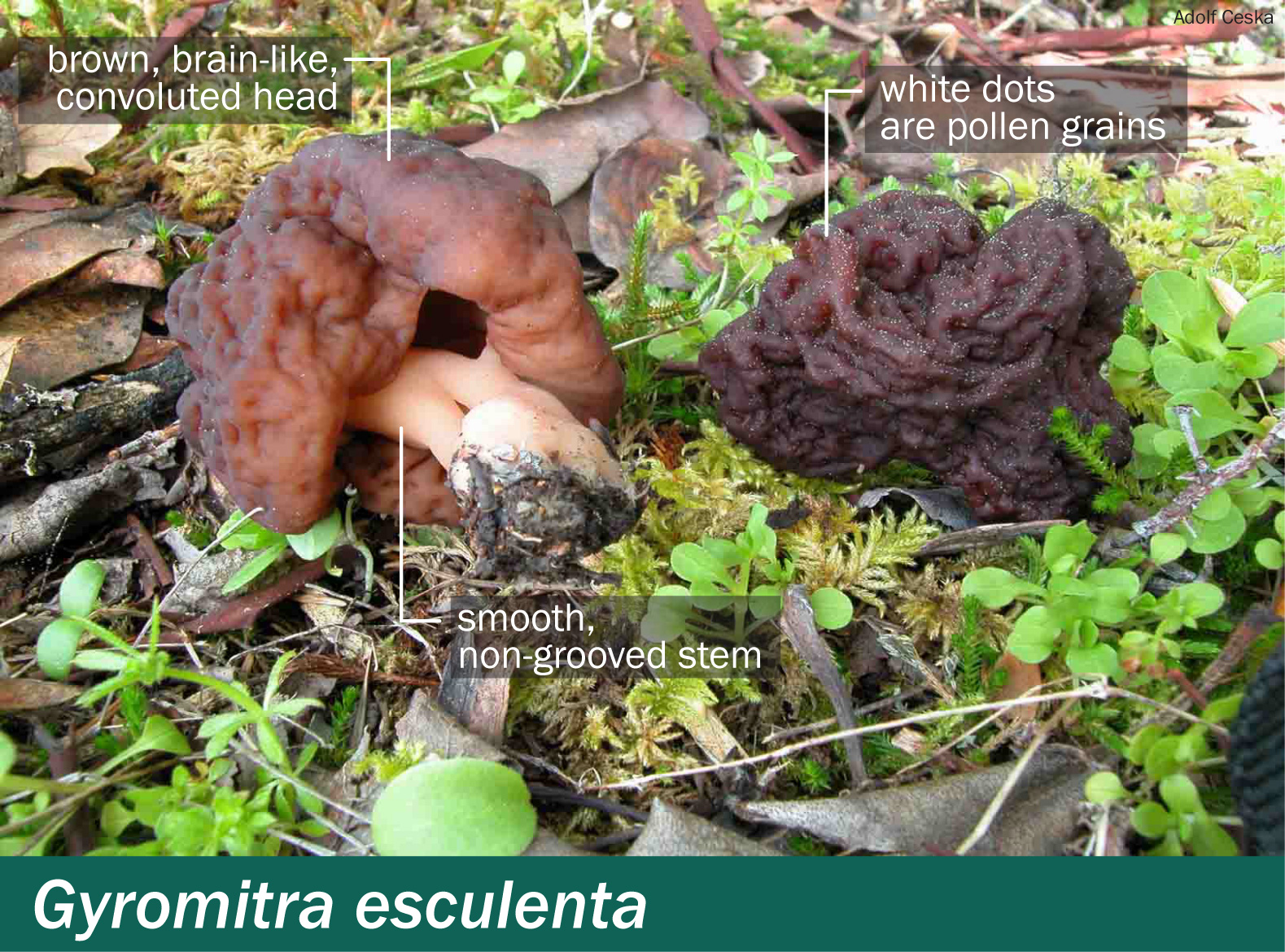Gyromitra esculenta — False morel, brain mushroom
False morel12, photograph by Adolf Ceska.
Warning: Do not confuse false morels with edible true morels. In true morels, the outermost surface of the cap has narrow, flattened ridges that form rims around deep pits. The outer surface of the false morel has rounded lobes or wrinkles rather than distinct rims.
Odour: Indistinct to mild.
Head: 2–7 cm broad, initially smooth but soon developing brain-like lobes and wrinkles surrounding a hollow interior. Reddish- or yellowish-brown to almost black, occasionally paler red-brown. Cut the fungus lengthwise to see air chambers located between the brownish surface of the head and the top of the stem.
Stems: 2–10 cm long x 0.5–2.5 cm wide (occasionally longer or wider). Usually lighter than the head, whitish to pinkish or tan, hollow.
Spores: 17–28 x 10–14 µm, broadly ellipsoid, smooth and commonly containing two round oil drops.
Habitat: On ground in conifer forests; saprotrophic7.
Geographical range: North America and Europe.
The hooded or pouched false morel, Gyromitra infula, resembles the false morel in size and colour but it grows on wood and has a 2–4-lobed head, often saddle-shaped, that is not as deeply wrinkled as in Gyromitra esculenta. Helvella species, elfin saddles have smooth, grey to brown saddle-shaped to convoluted heads and a cylindrical or ribbed stem. Eating any of these is ill-advised; Gyromitra and Helvella species contain toxic, carcinogenic monomethylhydrazines9.
Toxins: Gyromitrin, monomethylhydrazine, a component of rocket fuel.
Symptoms: Time of onset, 6-12 hours, beginning with stomach cramps, vomiting and watery diarrhea. Symptoms usually resolve themselves in 2-5 days. However, eating false morels occasionally results in severe illness, with gastrointestinal symptoms followed by liver and kidney damage, seizures, comas and in a few cases, death9.
Treatment: Contact your regional Poison Control Centre if you or someone you know is ill after eating false morels. Poison centres provide free, expert medical advice 24 hours a day, seven days a week. If possible, save the mushrooms or some of the leftover food containing the mushrooms to help confirm identification.
Poison Control:
British Columbia: 604-682-5050 or 1-800-567-8911.
United States (WA, OR, ID): 1-800-222-1222.
Cases of poisoning from false morels:
No human fatalities were reported among 68 reported poisonings in North America from Gyromitra and Helvella between 1985 and 200610. Three young campers collected a five-gallon bucket of false morels and cooked and ate a large quantity of them. All suffered a night of misery with nausea, vomiting, and diarrhea and one also had a headache and chills. The next morning their dog found and wolfed down leftovers from the pot and after vomiting and diarrhea and in spite of the best efforts of a veterinarian, died four days later11.

%20MO95807.jpeg)
